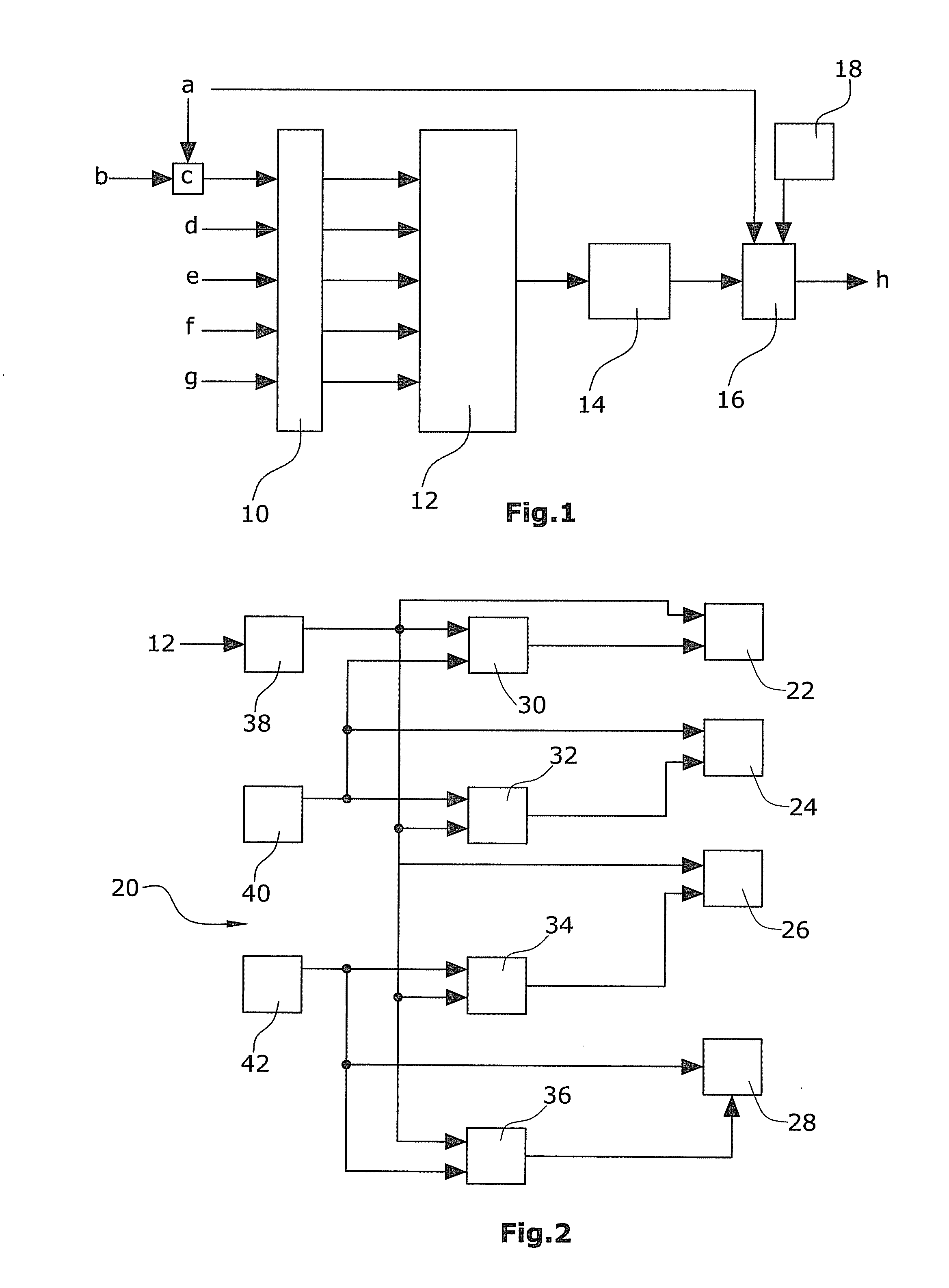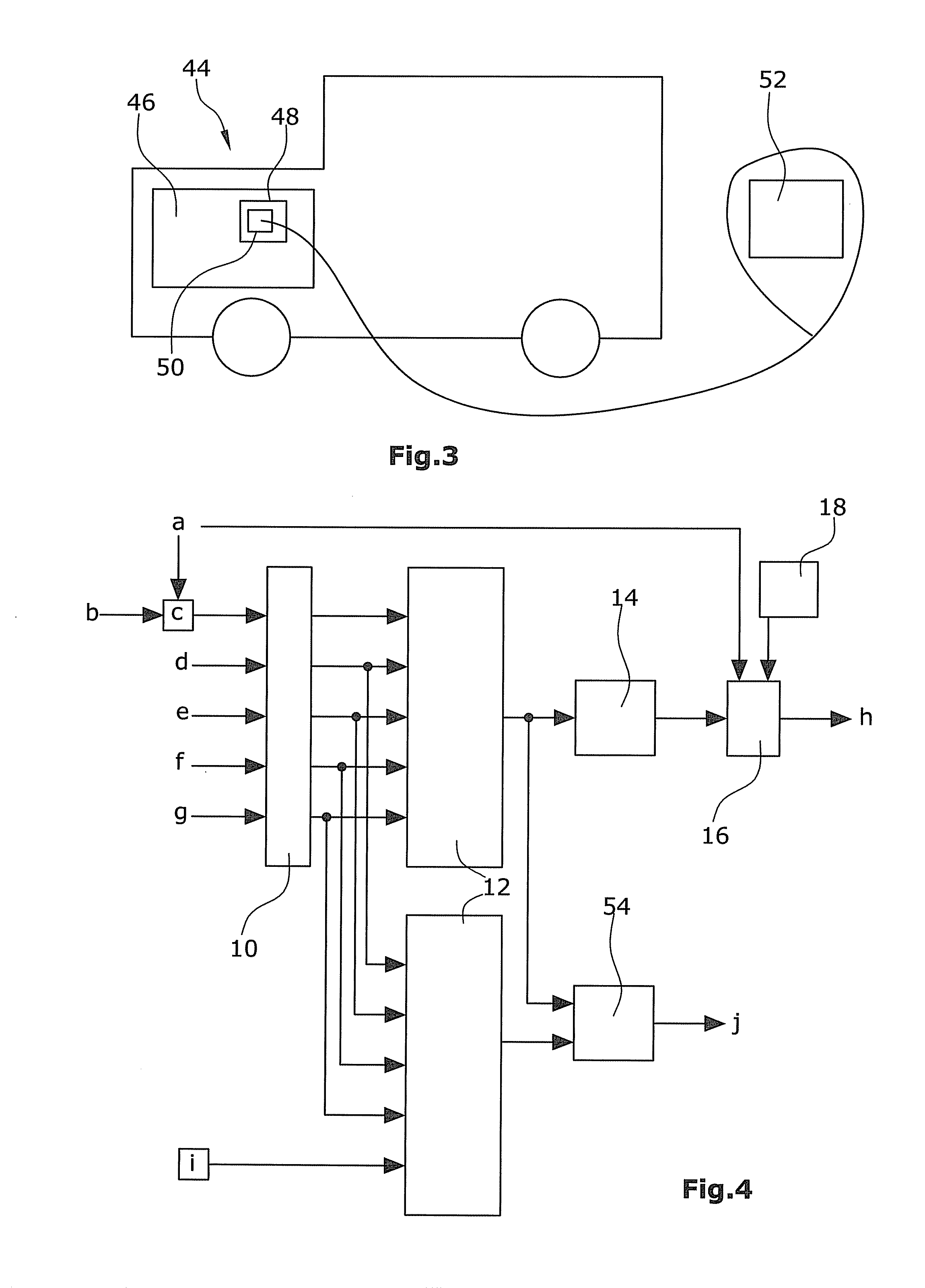Model-based cylinder charge detection for an internal combustion engine
a technology of internal combustion engine and cylinder charge, which is applied in the direction of combustion engines, electric control, machines/engines, etc., can solve the problems of inaccurate approach and achieve the effect of improving efficiency and increasing efficiency
- Summary
- Abstract
- Description
- Claims
- Application Information
AI Technical Summary
Benefits of technology
Problems solved by technology
Method used
Image
Examples
Embodiment Construction
[0044]FIG. 1 illustrates, in an exemplary manner, the architecture of a neuronal network for computation of the cylinder charge, comprising five input values. The first input value is a pressure quotient c. The pressure quotient c is indirectly determined by a pressure b of the air sucked by the internal combustion engine in relation to an operation pressure a. The pressure b of the air sucked by the internal combustion engine can be included in the pressure quotient as a suction tube pressure or a charging pressure. The value of the pressure b can be a measured value, a computed value or a value from a characteristic map. The operating pressure a can be an ambient pressure and can also be measured, computed or be taken from a characteristic map. The second input value is the rotary speed d of the internal combustion engine. The third input value is the valve lift e of the internal combustion engine. The fourth input value is the inlet phase f of an inlet valve camshaft phase which ...
PUM
 Login to View More
Login to View More Abstract
Description
Claims
Application Information
 Login to View More
Login to View More - R&D
- Intellectual Property
- Life Sciences
- Materials
- Tech Scout
- Unparalleled Data Quality
- Higher Quality Content
- 60% Fewer Hallucinations
Browse by: Latest US Patents, China's latest patents, Technical Efficacy Thesaurus, Application Domain, Technology Topic, Popular Technical Reports.
© 2025 PatSnap. All rights reserved.Legal|Privacy policy|Modern Slavery Act Transparency Statement|Sitemap|About US| Contact US: help@patsnap.com



